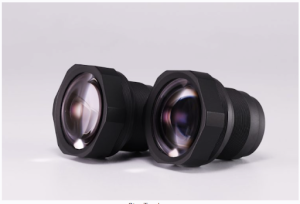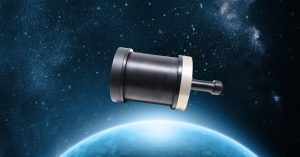Key Takeaways
- Optical sensors for ADCS—including star trackers, sun sensors, and Earth horizon sensors—provide the high-precision attitude knowledge required for CubeSats and small satellite platforms.
- Avantier delivers space-qualified optical components engineered for SWaP-constrained missions, offering compact, radiation-hardened systems that maintain performance under vibration, thermal cycling, and radiation exposure.
- Miniaturized, athermally stabilized optics and lightweight optical assemblies enhance pointing accuracy, detector stability, and long-term environmental resilience for next-generation small satellite imaging systems.
- Optical innovations such as beam-steering mechanisms, fast steering mirrors (FSMs), and photon-based torque devices support advanced ADCS functions and enable new levels of precision in spacecraft control.
The Role of Optical Systems in Enhancing ADCS Performance for Small Satellite Platforms
Attitude Determination and Control Systems (ADCS) are essential for maintaining the precise orientation of small satellite platforms, including CubeSats and microsatellites. High-fidelity optical subsystems—such as star trackers, solar aspect sensors, and Earth horizon sensors—serve as the backbone of inertial reference and vector-based navigation solutions in modern ADCS architectures.
Optical Sensors in Satellite ADCS Architectures
Optical sensing units in spaceflight ADCS provide critical input data for onboard estimators and control algorithms. The most commonly deployed optical sensors include:
Comparing Optical Sensors: Star Trackers, Sun Sensors, and Earth Horizon Sensors
- Star trackers: These systems utilize CMOS or CCD focal planes coupled with precision optical assemblies to capture stellar fields, which are then cross-referenced with onboard star catalogs. Sub-arcminute—or even sub-arcsecond—attitude knowledge can be achieved, depending on the system’s optical resolution, thermal stability, and onboard processing capability.
- Sun sensors: Employed for coarse attitude acquisition and Sun vector estimation, these units often use quadrant photodiodes or linear arrays positioned behind pinholes or refractive optics. Angular accuracy is governed by the optical geometry and detector response.
- Earth horizon sensors: Often operating in the thermal infrared (TIR) band, these sensors detect the radiometric contrast between Earth’s limb and space to derive nadir-pointing information and horizon crossing angles. Wide-angle optical elements and bandpass filters are commonly employed to enhance spatial resolution and signal-to-noise ratio.

Optical Subsystems and SWaP-Constrained Platforms
Small satellites impose strict limitations on Size, Weight, and Power (SWaP). In response, optical component suppliers design and manufacture miniaturized, athermally stabilized optical subsystems that maintain performance under dynamic thermal loading and vibration conditions. Innovations in lightweight materials, folded optical paths, and monolithic assemblies enable significant reductions in system volume and mass without compromising measurement accuracy.
Optics in Actuation and Active Pointing
In addition to passive sensing, optical components play an enabling role in advanced ADCS functions such as:- Beam steering mechanisms for optical communications and inter-satellite links, which rely on high-precision mirror mounts and fast steering mirrors (FSMs) integrated with tracking sensors.
- Photon momentum exchange devices (e.g., laser-based photon torquers) that generate minuscule but continuous torque for ultra-fine attitude adjustments.
Enabling Space Durability and Sensing Accuracy
Optical component manufacturers contribute directly to system-level performance by addressing both environmental survivability and sensor fidelity through:
1. Application-Specific Optical Design
Collaborative development of mission-specific optics—such as wide-field, low-distortion lenses or custom freeform mirrors—ensures alignment with field-of-view, modulation transfer function (MTF), and spectral response requirements.
2. Radiation-Tolerant Materials and Thin-Film Coatings
Use of space-qualified materials (e.g., fused silica, calcium fluoride, sapphire) and deposition of ion-beam-sputtered (IBS) or protected metal coatings ensure long-term transmission and reflectivity in low Earth orbit (LEO), geostationary orbit (GEO), or deep space conditions.
3. Miniaturization and Opto-Mechanical Integration
Optical suppliers develop highly integrated assemblies that combine lenses, detectors, apertures, and filters into compact, ruggedized enclosures. This reduces alignment errors and eases spacecraft integration.
4. Sub-Micron Precision Assembly and Interferometric Metrology
Sub-micron-level alignment and bonding of optical elements are achieved using interferometric metrology, active alignment techniques, and vacuum-compatible adhesives, supporting mission-critical pointing requirements.
5. Environmental Qualification and Flight-Readiness
Vibration, thermal vacuum, and radiation testing per standards such as MIL-STD-1540, ECSS-E-ST-10-03, or NASA GEVS ensure components meet launch and on-orbit operational tolerances.
6. Rapid Prototyping and Concurrent Engineering
Optics manufacturers engage early in the spacecraft development cycle to provide design-for-manufacturability (DfM) input, rapid prototyping, and design iteration support, accelerating the qualification and integration timeline.
Avantier’s Contribution |
Engineering Impact |
Custom optical design |
Mission-optimized sensing architectures |
Radiation-hardened substrates |
Long-term optical stability in orbit |
Compact, integrated optics |
SWaP-constrained payload accommodation |
Sub-micron alignment & metrology |
Enhanced pointing and tracking performance |
Flight qualification testing |
Risk mitigation during launch and orbit |
Case Studies by Avantier
https://avantierinc.com/resources/application-note/star-tracker-optical-design/
https://avantierinc.com/resources/application-note/optical-design-wavefront-sensor/
https://avantierinc.com/resources/knowledge-center/miniaturized-optics-for-satellites/
https://avantierinc.com/solutions/custom-optics/silicon-carbide-mirrors/
https://avantierinc.com/solutions/custom-optics/optical-mirrors/light-zerodur-mirrors/
Conclusion
As ADCS performance becomes increasingly mission-critical for small satellite constellations, the integration of high-precision, space-qualified optical systems is a key enabler. By leveraging the expertise of Avantier in advanced materials, precision metrology, and ruggedization, satellite engineers can achieve enhanced attitude knowledge, reliable control authority, and robust system longevity—even in the most challenging orbital regimes. Contact us today for your next project.
Related Content
GREAT ARTICLE!
Share this article to gain insights from your connections!







